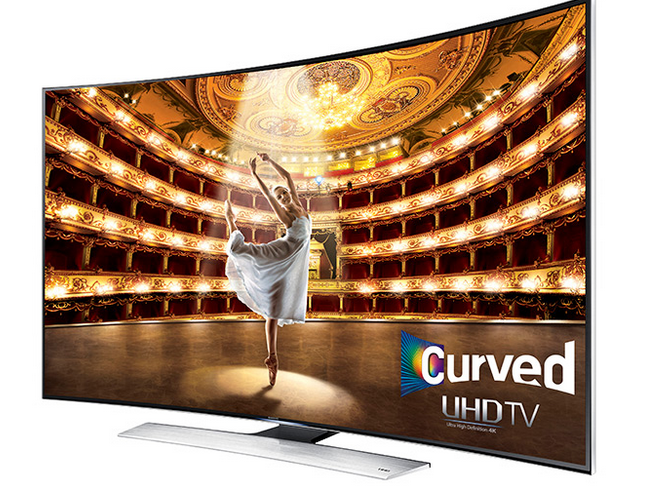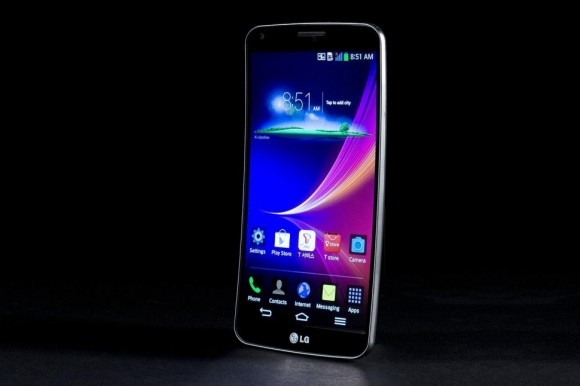aNewDomain — The bigger the tech trade show, the more that vendors compete to get their products recognized with superlatives: the best, the first, the lightest and other hyperbolic statements. It’s happening again this year at CES. Here are five major vendors — Lenovo, Sony, LG, Sharp and Samsung — with six products that are getting widely hailed with “superlative” designations across multiple categories, including laptops, tablets, phones and TVs. Is it really important to be superlative, though? Well, as we’ll see, the answer could depend on what’s being measured, and why.

Lenovo: Lightest Laptops
At CES, Lenovo rolled out two new Lavie Z ultrabooks, each getting praised in the media as the lightest in its respective class. The HZ550 model, weighing in at 1.72 pounds, is an ultrabook only. The slightly heftier HZ650, at 2.04 pounds, is actually a convertible, integrating the same type of 360 degree hinge that we continue to find in Lenovo’s Yoga tablets.
Both laptops are on the skinny side, too, measuring only 16.9 millimeters thick. To prevent easy breakability in these light and thin laptops, Lenovo has given them magnesium-lithium chassis touted as 50 percent lighter than aluminum but still as strong. It’s unlikely that anyone would argue that light, thin and tough aren’t good characteristics for laptops to have.
Also in the laptop space, by the way, Lenovo’s competitor Dell is taking home a “best” award in CES’s Best of Innovation contest.
Sony: Thinnest LCD TV
Sony is dubbing its new XBR-X900C TV “the world’s thinnest LCD television.” In fact, portions of the TV’s cabinet — the top half of the set — are merely 0.2-inches thin. The X900C is just one model among four new series of 4K TVs from Sony, providing four times higher resolution than 1080p HDTVs. Sony’s new TVs range in size from 43 inches up to 75 inches.
Sony is using Google’s Android TV to power all of these TVs, unlike rivals Sharp, which is using WebOS, and Samsung, which has stepped to Tizen.
But is thin necessarily better when it comes to TVs? Sharp and Samsung don’t seem to think so, because they’ve opted for much thicker, curvier approaches.

Sharp: First 8K TVs
Often referred to as “8K” TVs, Sharp’s newly announced latest (and greatest?) TVs are outfitted with 66 million subpixels, or some 42 million more than a typical RGB (red-green-blue) 4K TV. According to Sony, this brings its new series “Beyond the 4K Ultra HDTV” of native 8K.
Subpixels, though, are something different than the subpixel counts measured by designations such as 4K and 8K. Meanwhile, no content is available yet for 8K, anyway.
So Sharp isn’t claiming that these new TVs, set to ship this spring, are 8K TVs. But supposedly, the new TVs can reach an effective resolution of 7680 X 4320. If these are the highest resolution TVs available, that does appear to be a useful characteristic, given that they can work with existing content.
Samsung: First Tizen TVs
It hardly comes as a surprise that Samsung’s latest crop of TVs are the first to run the Tizen OS. After all, Tizen is Samsung’s own OS, which has been under development for a number of years.
Tizen is supposedly a fast OS, and Samsung is ultimately targeting interchangeable exchange of content among Tizen-based TVs, smartphones, tablets and smart watches. So far, however, the vast majority of Samsung phones and tablets run the Android OS.

The real reason behind Samsung’s shift to Tizen? Samsung wants to get away from Google’s Android grip.
Going forward, all new Samsung TVs will run Tizen, according to Samsung. If you already own a Samsung TV, though, it’s unlikely that Samsung will be retrofitting your old television with the new OS.
Lenovo: First Tablet with AnyPen
Lenovo’s newly unveiled Windows 8.1-based Yoga Tablet 2 offers impressive specs like a 64-bit Intel Atom 1.86GHz quad-core processor, 1920×1080 pixel-resolution IPS display, 2GB of RAM and 32GB internal storage. There’s also an 8 megapixel rear camera, a 1.6 megapixel front camera, and Wolfson Master Hi-Fi-powered front-facing speakers. Let’s not forget Yoga’s hallmark kickstand. But more significantly, like Samsung’s latest TVs, it’s also the first to run a vendor-specific proprietary technology. In this instance, it’s AnyPen.
With AnyPen, you can ditch a tablet stylus. Instead, you can use a pen, pencil or any metal object, such as keys, a screwdriver or a fork. It’s easy to see how this could come in handy. No more worries about leaving your stylus at home or losing it somewhere, right? Simply reach for the nearest metal object around. You won’t even need to buy a new stylus. Is AnyPen anything more than a gimmick? Time will tell.
LG: Curviest Smartphone
LG’s new G Flex 2 is another product where nice specs don’t tell the whole story. Yes, this phone comes with Android Lollipop and a 64-bit Snapdragon processor, 5.5-inch 1080p OLED screen, certain gestural controls and LG’s “self-healing” finish. But there’s not a huge wow factor to any of these. What’s really unusual about the G Flex 2 is its shape.

Like the earlier G Flex, the G Flex 2 is a curved phone. In this case, it has four curves, rather than one. It’s curved — to one degree or another — on the display side, the back, the top and the bottom. Curves all around, as it were.
This differentiating feature from LG has stirred considerable controversy. As LG (and some other proponents) view things, the G Flex 2’s design is beautiful. What’s more, like the landline phones that are now heading toward total obsolescence, the G Flex 2 conforms to the shape of your face for comfortable phone calling.
Yet detractors contend that the G Flex 2 is also a data device, and that the curves make it harder to see the screen from the side — and more difficult to use with one hand — if you’re trying to surf the web or use texting or emailing.
Is the G Flex 2’s design a boon or a boondoggle? Beauty is in the eye of the beholder – or the hand, as LG would have it in its promotional materials. You be the judge.
For aNewDomain, I’m Jacqueline Emigh.
Image Credits in Order: Mat Lee, Canada HiFi, Samsung, LG












